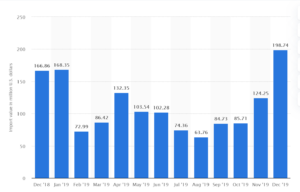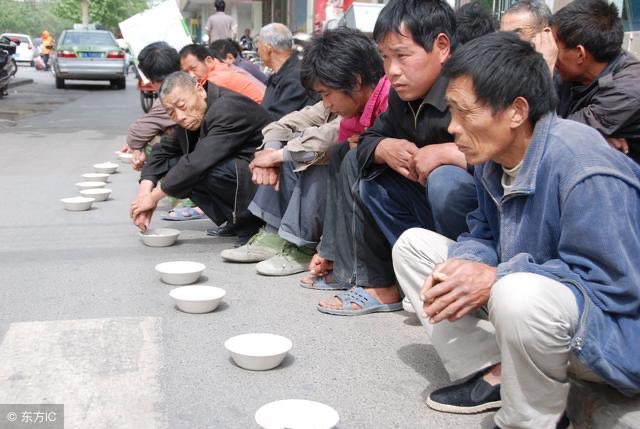While the world is fighting the coronavirus pandemic, the Chinese regime is busy destroying evidence of its crimes – fabricating the number of coronavirus cases and death toll, jailing whistleblowers, and persecuting the frontline Chinese doctors and nurses who witnessed the disease outburst in Wuhan. On top of that, China is, quietly but aggressively, hoarding medical supplies and rice amid mounting concern over global shortage of this most essential food staple.
Why China, the world’s largest rice producer, quietly bought U.S. rice
The National Public Radio (NPR) reported in 2019 that China quietly imported rice from the U.S. As the world’s largest producer of rice, China produces 200 million tons a year. At the same time, China is the world’s number one importer of rice.
In 1995, Lester Brown – an American environmental analyst – published a book titled “Who will feed China: Wake-up call for a small planet.” In the book, the author used data to show that water becomes scarcer in China where 80 percent of the grain crop is irrigated, and the loss of cropland to industrialization substantially reduces food production. He concluded that China’s own rice yield is not enough to feed its population of 1.4 billion population.
In 2017, China imported 4.03 million tons of rice. The reasons why China shifted from a traditional rice exporter into the world’s largest rice importer include:
-
Demand – Farming brings little income in China. With the growing economy and rising urbanization level, many rural laborers flee to cities and towns instead of staying engaged in agriculture, which leads to sluggish growth in agricultural output; and
-
Supply – The prices of domestically grown rice are much higher than those of imported rice. China’s rice imports are mainly mid-and low-end rice from Vietnam and Thailand. Their prices are only 80% of domestically grown rice at the same quality levels or lower.
Why import rice from the U.S.?
The story starts back in 2001, when China joined the WTO and agreed to make it easier and cheaper specifically for 5.3 million tons of foreign rice to come into the country. While the “plan” for China to buy rice from America has been cooking for a long time, the pressure to “get it cooked” came to bear recently, after President Trump was elected.
For years, China promised to buy rice from American farmers but reneged on its side of the deal. China has never made it easier or cheaper to import foreign rice like it had promised. According to the NPR report, during the last couple of months of the Obama administration, the U.S. took China to the WTO to the settlement body and said, “hey, China’s not playing by the rules; they’re not importing rice.”
Until the current administration flexed some muscle, did China start to import rice from the United States, thanks to President Trump’s tough, open and respectful negotiations with the Chinese regime. On December 27, 2018, the General Administration of Customs of China (GACC) granted market access to U.S. milled rice and listed 7 U.S. rice facilities as approved to export to China. An additional 25 U.S. facilities were listed as approved to export to China on February 28, 2019, according to the USDA.
Fair and reciprocal trade is President Trump’s goal when negotiating with the Chinese regime. For decades, U.S. leaders believed that by having China become a member of the WTO, trade deals with China could be based on economic justice and benefit American workers, farmers, and families. However, it’s never been the case when trading with China, a regime that cannot be trusted.
Hoarding rice amid mounting concerns over global food supply
At the beginning of April 2020, a message was widely spread in the social media and attracted many people’s attention. The tweeted message and video (in Chinese language) show that a lady was arrested by the Chinese government for posting a warning online telling her friends and relatives to hoard rice. “Why? It was just rice, not a gun that she told people to buy.” Many people questioned in different social media platforms.
The story sounds familiar. On Dec 30, 2019, Dr. Li Wenliang sent a message to a group of fellow doctors warning them about a possible outbreak of an illness that resembled severe acute respiratory syndrome (SARS) in Wuhan, Hubei province, China, where he worked. Meant to be a private message, he encouraged them to protect themselves from infection. Days later, he was summoned to the Public Security Bureau in Wuhan and forced to sign a document in which he was accused of making false statements that disturbed the public order.
A half truth is a whole lie. At a recent conference, a Chinese agriculture ministry official said, “Market supplies are ample and there is no need to hoard.” Based on records that prove that China repeatedly lied to the world, I believe that rice shortage is a serious issue in China and the government is suppressing the truth. At least, there is a sign that the Chinese government is hoarding rice amid mounting concerns over the possibility that the global food supply might be interrupted by the pandemic.
According to a brief from the U.S. Department of Agriculture (USDA) dated April 9, 2020, the government of China recently announced several grain policy changes to meet increasing foodstuff demand and confront the global spread of COVID-19. The policy changes aim to produce and purchase more rice and wheat – the most important grains needed to feed 1.4 billion Chinese. “China’s 2020/21 feed and residual use in total are forecast to increase 8.1 million tons, a four percent increase over 2019/20,” the USDA reported.

Controlling the access to water in Southeast Asia
“Government officials in China, the world’s biggest consumer and producer of rice, called on citizens not to hoard the grain after a recent ban on new export sales by Vietnam sparked concerns over global supplies,” the U.S. media reported recently. In March 2020, Vietnam temporarily stopped signing any new rice export contracts, as the Vietnam government wanted to know whether the country has enough domestic supplies to cope during the coronavirus outbreak.
During 2018, Vietnam supplied 46 percent of China’s total rice imports, and Thailand, 42 percent. The concern over rice supplies in Vietnam is also related to the horrific drought caused by China. By taking advantage of its geographic position, China is controlling the flow of Southeast Asia’s most important river through a dam-building “spree.”
The famous waterway, the Mekong River, starts in China and meanders south through parts of Thailand, Laos, Myanmar, Cambodia and Vietnam, feeding 60 million people through its basin and tributaries. A Vietnamese tweeted recently, “Dear friends, I’m from Vietnam, and stand with Thailand, Laos, Cambodia and Myanmar. We are suffering from heavy drought in living memory. China limited Mekong River’s Flow, and their selfishness will cause the entire MeKong Country to die. China is not friend. #StopMekongDam.”
“China is not friend.” Knowing that the coronavirus is highly contagious and can be transmitted from human to human, the Chinese government did not ban international travel from Wuhan while banning domestic travel to and from Wuhan, nor informed any country of the disease during its early stages (i.e. December 2019 to January 2020). This deliberate “negligence” has caused the death of 178,000 people in the world. Worse yet, before the coronavirus outbreak reached pandemic levels, China imported more than two billion masks and 25 million pieces of protective clothing from overseas.
What China is doing
By hoarding medical supplies, the Chinese government adds insult to injury to the pandemic originated in its own country, but that now affects more than 180 countries. By controlling the water flow of the Mekong River and hoarding rice, the Chinese regime is plotting and preparing to repeat another big human tragedy.
“When a country is beset by internal conflicts, when disease and famine ravage the population, when corruption and crime are rampant, then it will be unable to deal with an outside threat. This is the time to attack.” This is one of the thirty-six stratagems in Sun Tzu’s The Art of War. This is exactly what China is doing when the world is suffering from the coronavirus pandemic.
China is looting a burning house.
Lester Brown already warned us in 1995 –
“In an integrated world economy, China’s rising food prices will become the world’s rising food prices. China’s land scarcity will become everyone’s land scarcity. And water scarcity in China will affect the entire world. China’s dependence on massive imports, like the collapse of the world’s fisheries, will be a wake-up call that we are colliding with the earth’s capacity to feed us. It could well lead us to redefine national security away from military preparedness and toward maintaining adequate food supplies.”
